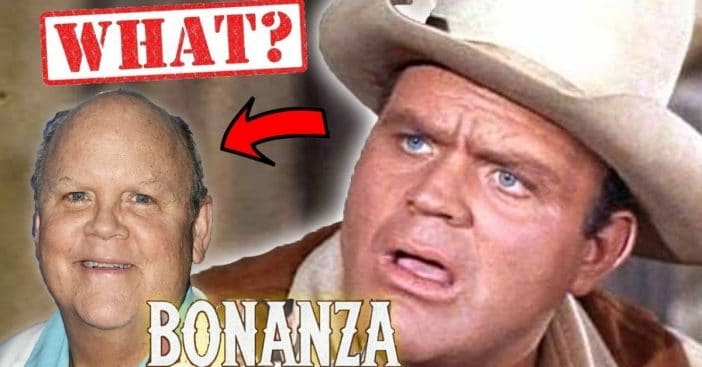
Looks here like we’ve struck gold! Ah, Bonanza— a treasure trove of little-known facts about the most groundbreaking western of the age. Bonanza had everything, from intense action to unforgettable music, and it still managed to break the mold. And we uncovered some secrets about the Cartwrights and company, and we’re here to share the wealth with all.
Let’s jump back a few decades and mine out some trivia that made Bonanza so exceptional.
Revolutionary Premise
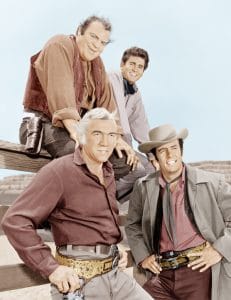
Hop back to the 1950s, and if young men wanted a good role model, it probably wasn’t coming from the small screen. That’s why Bonanza producer David Dortort was dead set on making the Cartwright men, first and foremost, admirable. He made sure he got hour-long episodes instead of the standard 30 minutes. That gave each Cartwright time to show he’s capable and strong. And it worked. Dortort got thousands of letters from teenage boys wishing that Benjamin Cartwright was their own father.
RELATED: ‘Bonanza’ Cast Then And Now 2021
All this work was to make a western retelling of King Arthur. Of course, that made Ben Cartwright King Arthur, and his sons were the knights of the round table. That wasn’t the only way Bonanza broke ground— besides, you know, the mining. Additionally, it took a whole new approach to the Western genre. This was the first time a Western didn’t just revolve around shootouts with local baddies. Instead, Bonanza actually used the genre as a general backdrop to talk about important social issues, the first of its kind to do that.
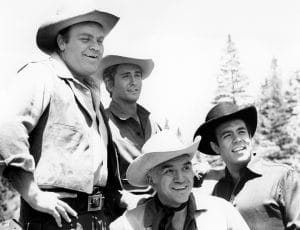
They had to make some character adjustments along the way. The Cartwrights started fairly hostile towards their neighbors. But the writers realized this family would be all about helping their community, so they should probably be nicer.
All Things Equal
The Bonanza team really wanted their male leads to feeling like equals. So the show regularly swapped the billing order for each cast member so everyone got the same amount of exposure.
Then you’ll see they did the same thing for the opening credits. Each week featured a different name showing up first so everyone got a chance to shine.
Sometimes this lack of favoritism was so stagnant, that during the first season, some famous guest stars got paid more than the main cast. The show’s increasing popularity for season 2 let allotted pay raises for the mainstays, except for Victor Sen Yung, who played the Cartwright’s chef. Yet, Victor was a clever man and turned to writing cookbooks to balance his income.
Wardrobe Hacks
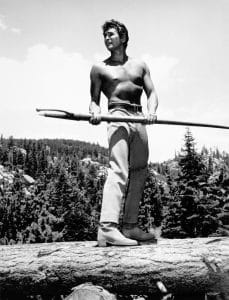
Michael Landon didn’t want the nickname “Little Joe” to be literal, but it kind of was. His castmates were all over 6 feet tall, while Landon was around 5 foot 9. His height bothered him in every show he had a lead-in, from Bonanza to Little House on the Prairie. So he got thrifty and pulled a few tricks to appear taller— his favorite was wearing platform boots or heeled shoes. Or simply standing on a step higher.
But Landon wasn’t the only one with some fashion additions to help his ego. From the very start, Lorne Greene and Pernell Roberts both wore headpieces as their hair thinned. By season 9, Dan Blocker joined the club with a toupee to hide his bald spot. Landon didn’t go bald, but his full head of luscious locks was colored from a can since he started graying when he was young.
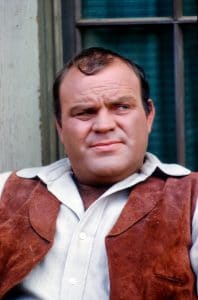
Another wardrobe hack helped the viewers and showrunners. After so many episodes, these four guys basically wore the same outfit, like out of a cartoon. However, this choice was for everyone’s benefit. Firstly, viewers could quickly spot one of the Cartwrights’ distinctive color palates to know who’s who. Secondly, it helped the editors, the effects team could easily reuse stock footage for many of those action scenes. And another bonus was for the wardrobe department, they could quickly duplicate outfits for the stunt doubles.
All or Nothing
For its time, Bonanza did a lot of new things and was very progressive. It had a few misses, however, Hop Sing was basically a walking stereotype. But for its time, the series led the way towards acceptance of all races. However, according to Pernell Roberts, the show wasn’t going far enough.
Roberts decided to leave Bonanza because of creative differences and even resentment towards the show. In fact, he was so vocal about wanting out of his contract, the team kept multiple actors on standby.
At the end of the day, Roberts didn’t think Bonanza was progressive enough. He thought it was demeaning to women and actually celebrated the wealth gap between rich and poor, all with low-brow humor. Roberts also wanted his character to marry a Native American woman. Pretty admirable effort Pernell. But when he left, the remaining leads split his paycheck among themselves.
Set Tensions
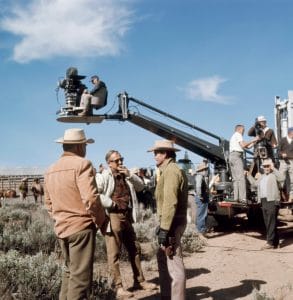
Things weren’t always sunshine and joy at Ponderosa Ranch. For one thing, Michael Landon was notoriously difficult to work with. The heartthrob was young, but already had very specific opinions about how scenes should look and sound. And Landon was not afraid of flat-out arguing with the network about the show’s direction. His attitude annoyed the crew, but Landon ended up a semi-official creative consultant for Bonanza and would go on to take a larger control role for Little House on the Prairie.
Then, as for Lorne Greene, he had his own morbid reputation to fight against. Before Bonanza, America’s favorite dad was given the joyful title The Voice of Doom, after he was the leading reporter for World War II and the bombings over Britain. He had to convince viewers his voice wasn’t always something to be afraid of and turns out he played this kind of personality perfectly.
Worth Its Weight In Gold
Bonanza brought in the big bucks. It was expensive to shoot this show, using a budget of $100,000 to $150,000 per episode. That per episode price kept climbing with each new season, reaching $225,000 by season fourteen. Thanks to this trend, Bonanza became one of the 8 most expensive shows produced in the ‘60s and ‘70s. But it also became the 2nd most popular Western just behind Gunsmoke, so I guess it balances out.
Speaking of budget balancing, Bonanza managed to stay afloat thanks to the show being so popular, it gained a ton due to merchandising. It raked in money thanks to themed toys, clothing, and even folk music albums!
Jump The Shark— Or, The Horse
Before the Fonz made jumping the shark cool and lethal for shows, Bonanza had him beat by over a decade. With 431 episodes, the series took some strange turns. Look no further than Hoss and the Leprechauns, season 5 episode 12 from 1963. Hoss brings home a box of gold from the leprechauns, and the whole town goes on a hunt for them. Then the show swerves a bit and the leprechauns aren’t a fantasy at all, but just performers. By the end, Hoss is demanding tolerance for Little People. Fonzie would approve.
Earlier that season, Bonanza went full Twilight Zone— the episode was even called “Twilight Town,” and had Joe become the sheriff of a ghost town. Oftentimes there was some woman who may or may not be psychic or a witch. And usually, our eligible bachelor Cartwrights easily fall into her thrall.
Then, of course, there’s the time Bonanza practically invented steampunk, the mix of Industrial Revolution gear with futuristic inventions. A local inventor did what da Vinci himself couldn’t and made mechanical wings to turn Hoss into a “300-pound robin,” to quote the official title.
Baby Hoss
Dan Blocker has been breaking ground since birth, born a whopping 14 pounds which broke the Bowie County record and still stands strong today. He reached 100 pounds by age 6 and eventually towered over everyone at 6 foot 4 inches, but he wasn’t done making history. It’s thanks to him America has the Bonanza Steakhouses.
Sadly, he died as the series reached its end. Even in this way, he made history as Bonanza decided no one could ever fill Block’s shoes and became the very first show to kill off a main male lead and address it.
I’m sure all of us can hum the Bonanza theme in our sleep. But can you sing the lyrics? That’s right, Bonanza’s theme once had lyrics. In fact, they had Lorne Greene, Dan Blocker, and Michael Landon sing for the intro. For reasons unknown, this version never made it to the final cut, though the tune was popular with other singers.
Probably the biggest fan of Bonanza’s music was Johnny Cash, who made his very own cover of the famous tune. But he had a competition with the king of Rock himself, Elvis Presley, who used his fame and pleaded for a picture with the Cartwrights.
Greene’s singing didn’t make the intro, but he still made a musical career for himself. He used that baritone voice of his for spoken-word folk albums, and even won awards for the hit track “Ringo.”
The Rural Purge
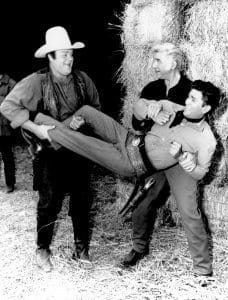
During what became known as the Rural Purge in the early ’70s, networks started booting shows with rural settings one by one and replaced them with shows set in the city. Bonanza survived the first wave, then got dethroned in ‘73 by Bea Arthur’s Maude.
Some fans also say Bonanza died with Dan Blocker. The episodes addressing his death pulled in more views than most others. However, the season without him ended up with lower ratings, and that was the final death blow to this historic show.
One of the all-time greats. What episode of this show do you remember vividly? Did you watch it with your family? Who was your favorite character on Bonanza?
